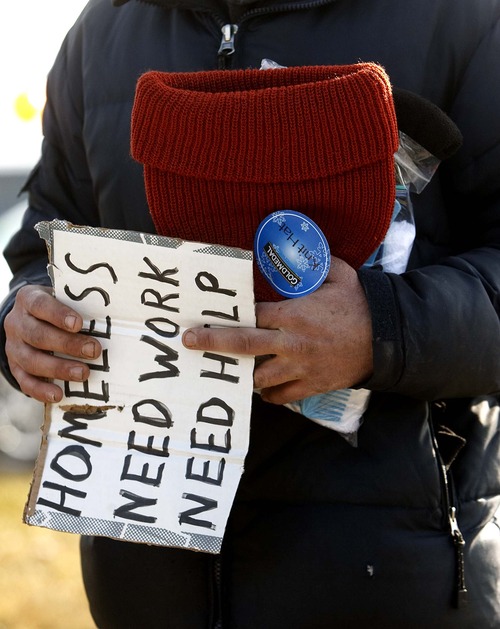This is an archived article that was published on sltrib.com in 2013, and information in the article may be outdated. It is provided only for personal research purposes and may not be reprinted.
By all accounts, Salt Lake City is seeing an upswing in homelessness — particularly in the Rio Grande neighborhood surrounding Pioneer Park — but according to a new Utah report, chronic homelessness in Utah is down by 9.5 percent.
Many in the chronic homeless population — defined as anyone without a residence for more than one year — suffer disabling conditions, including alcoholism, drug addiction and mental as well as physical illness. The vast majority of them are men, according to social service providers.
"Their disabilities stop them from functioning," said Gordon D. Walker, director of the Utah Division of Housing and Community Development. "Our goal is to offer housing to all the chronic homeless. We now have [available] housing for all homeless veterans."
Once they have permanent housing, they are then offered services, such as treatment, counseling and job training.
The "2013 Utah Comprehensive Report on Homelessness" issued Thursday reveals chronic homelessness dropped by 47 individuals, equivalent to 9.5 percent from 2012.
But service providers, police and business owners all say homelessness is on the upswing in Salt Lake City. According to the report, some 15,000 Utahns were homeless in the past year. But they were without permanent residences for only 26 days on average.
The overwhelming cause of homelessness is due to economic factors, said Kathy Bray, CEO of Volunteers of America, Utah.
Shrinking the chronically homeless population is good news for more than one reason. Beyond providing stable lives for them, it frees up resources that can be provided to families who have recently become homeless, she said.
"We want to get those families back into homes as soon as possible," Bray said. A program called "rapid rehousing" helps families with rental deposits, job training and, in some cases, with rent.
"The bad news is there are still people becoming homeless every day because of economic conditions," she said. The majority of them work but still cannot afford rents.
The chronically homeless are counted each January, Walker said, through a coordinated effort by agencies and nonprofit organizations utilizing federal, state and municipal funding.
"We search them out. We know where they are. We know them by name," Walker said.
But although service providers may find chronically homeless people living under bridges, behind warehouses or along the banks of the Jordan River, they may not choose to accept permanent housing, Walker said. Of that group, several dozen veterans remain homeless, according to the report.



